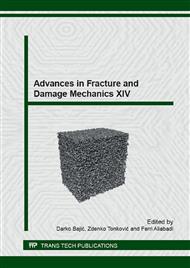p.125
p.129
p.133
p.137
p.141
p.145
p.149
p.153
p.157
TEM Study of Microstructure Changes, Formation and Distribution of Slip Bands in Austenitic Steels after Low-Cycle Fatigue (LCF) Deformation - II
Abstract:
The microstructure changes, development of micro plastic deformation and formation and distribution of slip bands were studied. It is shown that development of micro deformation during LCF depends on loading conditions (amplitude and number of cycles) and microstructureIt is shown that as non-localized as well as localized micro plastic deformation takes place because of structural inhomogeneity. Supposedly, the localized deformation is related to the sites of internal stress concentration accumulated during the LCF.The effect of microstructure of structural steels on the rate of local cyclic deformation, leading to nucleation and growth of slip bands of fatigue cracks, was studied. The interaction of slip bands with precipitates, grain boundaries and low-angle boundaries were also analyzed.The sites of nucleation of primary and secondary slip bands were identified, and the following aspects were considered: 1. the possibility of microcrack nucleation on (or in) slip bands, 2. The kind of slip bands the slip bands may nucleate in, 3. The potential sites (except the slip bands) and reasons of nanocrack formation are specified.
Info:
Periodical:
Pages:
141-144
Citation:
Online since:
September 2015
Authors:
Keywords:
Price:
Сopyright:
© 2016 Trans Tech Publications Ltd. All Rights Reserved
Share:
Citation:


